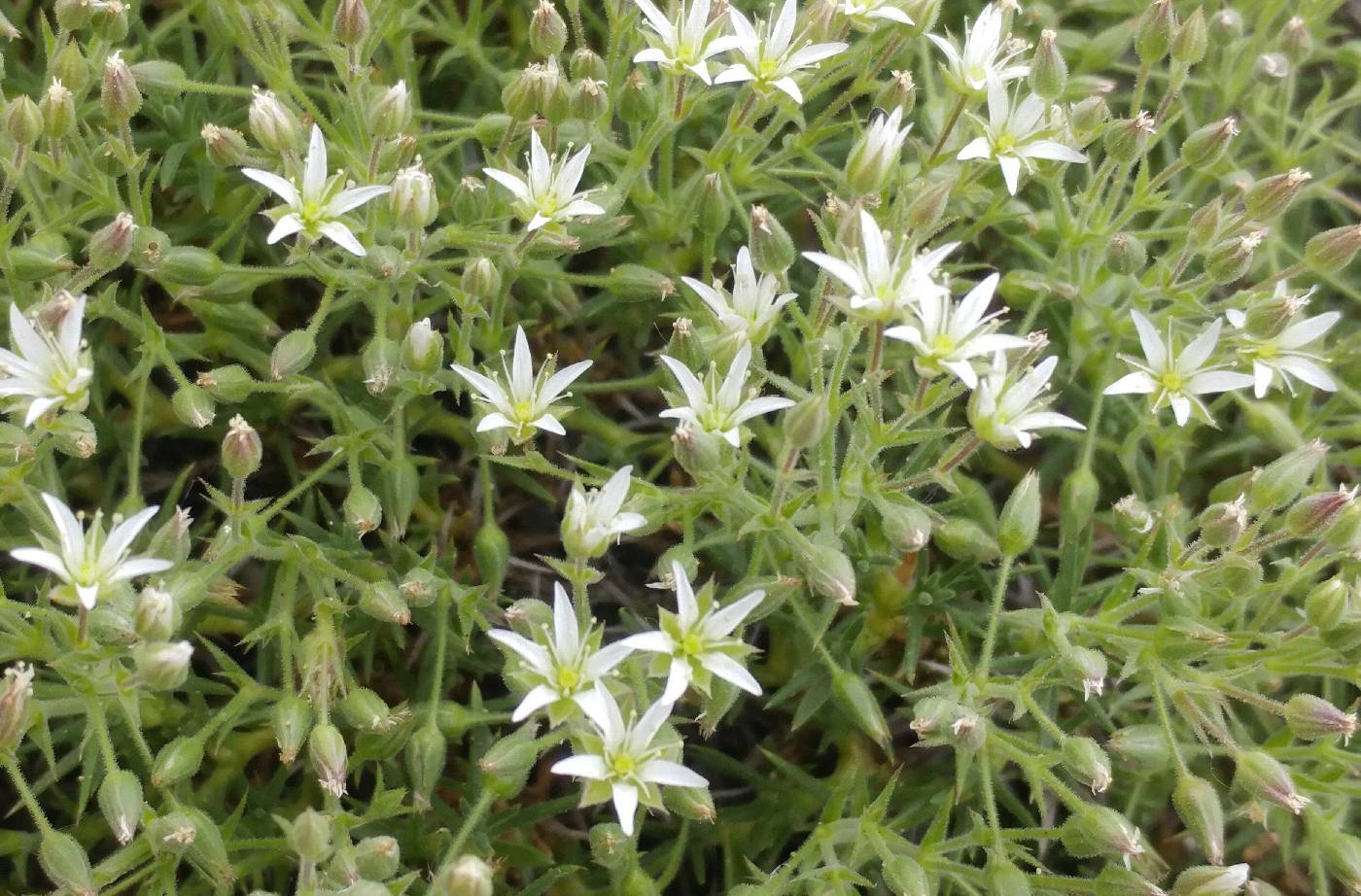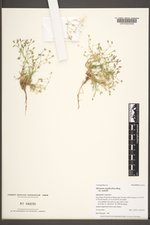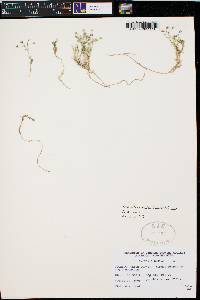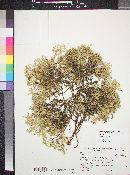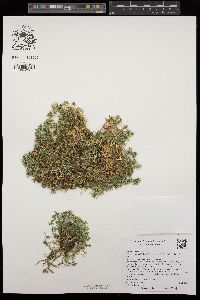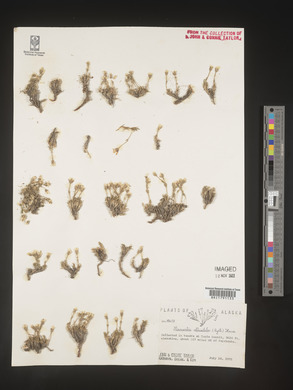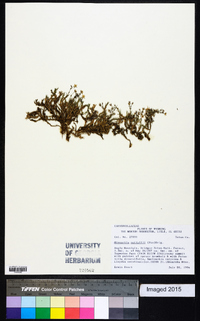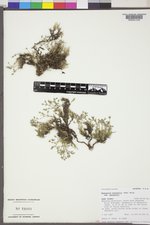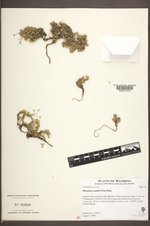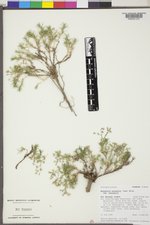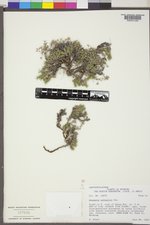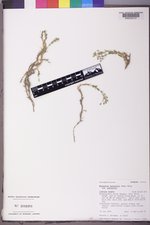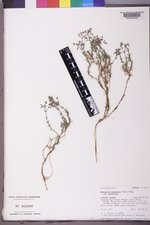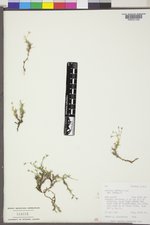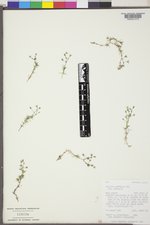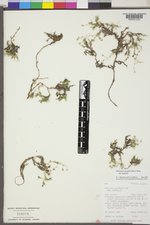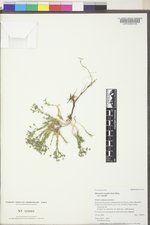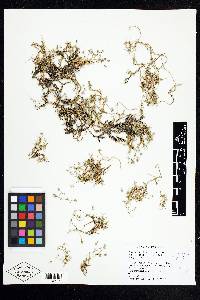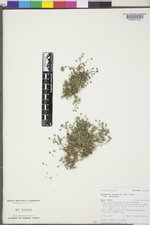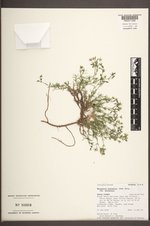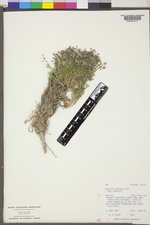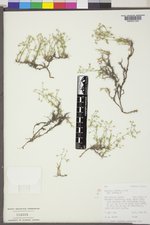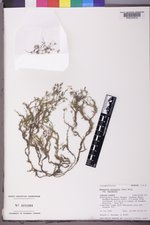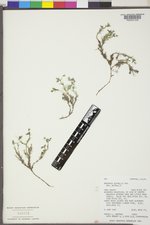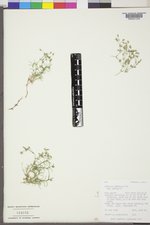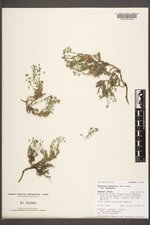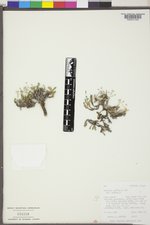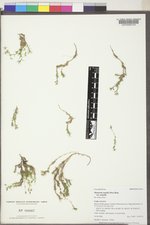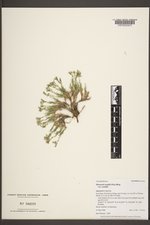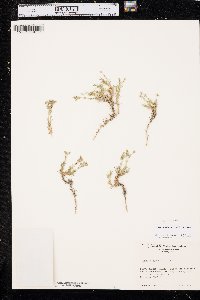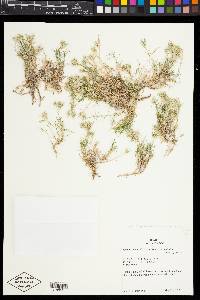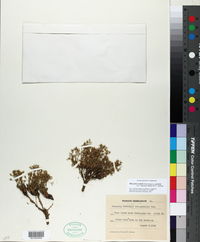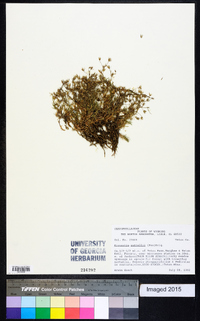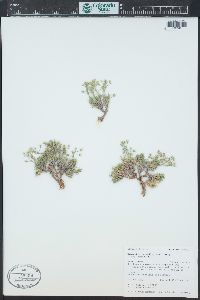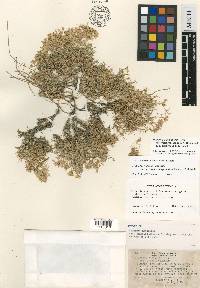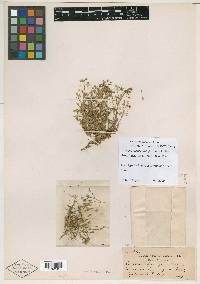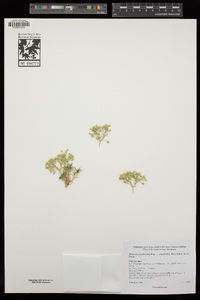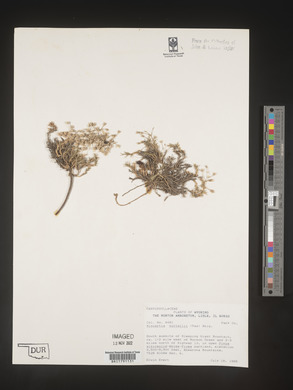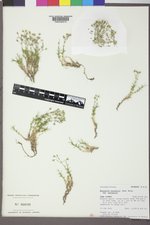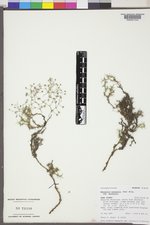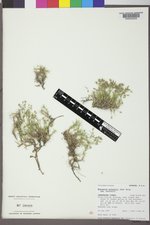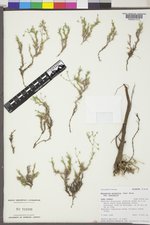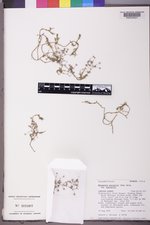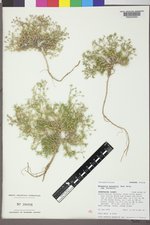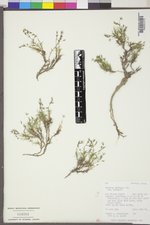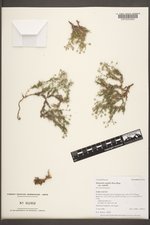
|
|
|
|
Family: Caryophyllaceae
Brittle Mock Sandwort
[Alsinopsis nuttallii (Pax) Small, moreArenaria nuttallii var. gracilipes , Minuartia nuttallii (Pax) Briq., Minuartia nuttallii subsp. nuttallii (Pax) Briq., Minuartia nuttallii var. nuttallii (Pax) Briq.] |
Plants perennial, mat-forming. Taproots thickened, woody; crown, many-branched, woody; rhizomes and trailing stems to 60 cm. Stems ascending to erect, ± green, 2-20 cm, densely glandular-hairy throughout, internodes of flowering stems 0.2-2 times as long as leaves. Leaves tightly appressed to spreading, ± evenly spaced, connate proximally, with ± loose, scarious sheath 0.1-0.7 mm; blade straight to recurved, ± green, flat, prominently 1-veined abaxially, broadly lanceolate to linear, 5-20 × 0.5-1.5 mm, ± rigid, margins rounded, scarious in proximal 3- 4, apex green to purple, acute to acuminate or spinescent, navicular with small mucro or spinescent, dull, stipitate-glandular; axillary leaves present proximally to throughout. Inflorescences (3-)6-30-flowered, open cymes; bracts lanceolate to subulate, usually scarious. Pedicels 0.2-2 cm, stipitate-glandular. Flowers: hypanthium disc-shaped; sepals 1-3-veined, narrowly lanceolate to lanceolate or ovate (herbaceous portion narrowly lanceolate to lanceolate or ovate), 3-6(-7) mm, not enlarging in fruit, apex often purple, acute to acuminate or spinescent, not hooded, stipitate-glandular; petals obovate, 0.5-1.6 times as long as sepals, apex rounded, entire. Capsules on stipe ca. 0.1-0.2 mm, ovoid, 5 mm, usually shorter than sepals. Seeds reddish brown to dark brown, oblong-elliptic with hilar notch on 1 end, 1.5-2.7 mm, tuberculate; tubercles low-rounded. Minuartia nuttallii, M. decumbens, M. rosei, and M. stolonifera form a complex that, together with the eastern species M. caroliniana and M. michauxii, comprise sect. Sclerophylla Mattfeld. The four western species all have capsules that contain one to three(-) large (1.5-2.8 mm) seeds; unfortunately, these plants appear to be collected only rarely in fruit. Minuartia nuttallii includes four varieties, which can, for the most part, be easily recognized. There is some overlap between var. gracilis and var. fragilis in western Nevada and southeastern Oregon, where some plants exhibit prominently arcuate-spreading leaves (as in var. fragilis) and weakly veined sepals (as in var. gracilis).
Leaves closely appressed to prom-inently arcuate; blade 7-11 mm, apex acute to acuminate, navic-ular, with small mucro, not spine-tipped. Flowers: sepals promi-nently 1(-3)-veined, lance-olate to narrowly so (herbaceous portion lanceolate to narrowly so), 3.5-5.5(-7) mm, apex acuminate; petals 0.5-1.2 times as long as sepals. 2n = 36. Flowering spring-summer. Sandy and rocky slopes and ridges, chaparral, open pine woodlands, alpine slopes; 600-3800 m; Alta., B.C.; Colo., Idaho, Mont., Oreg., Utah, Wash., Wyo. |
This project was made possible in part by the Institute of Museum and Library Services [MG-70-19-0057-19].
Powered by Symbiota

